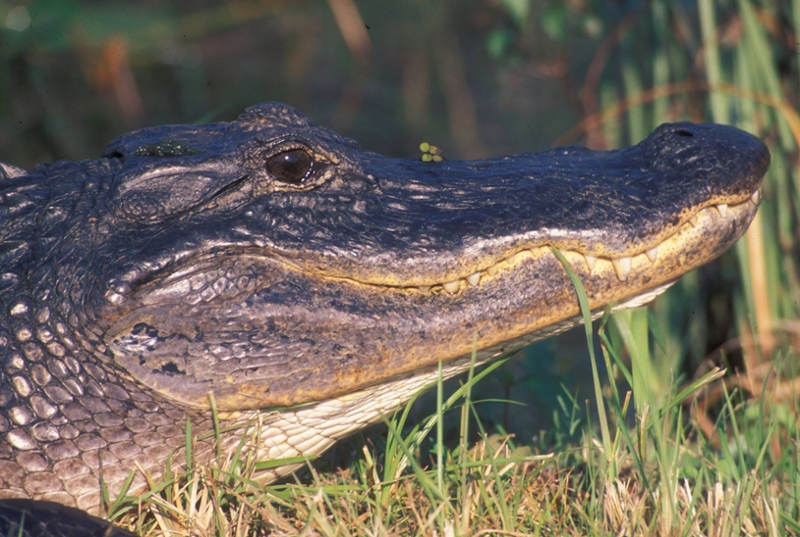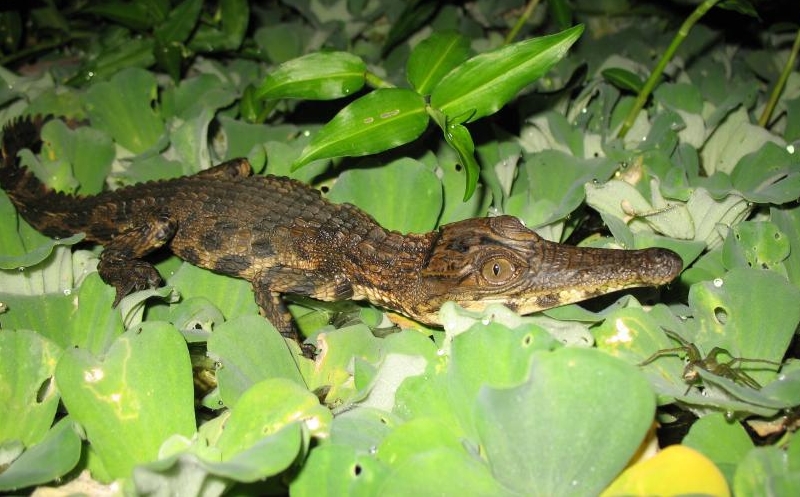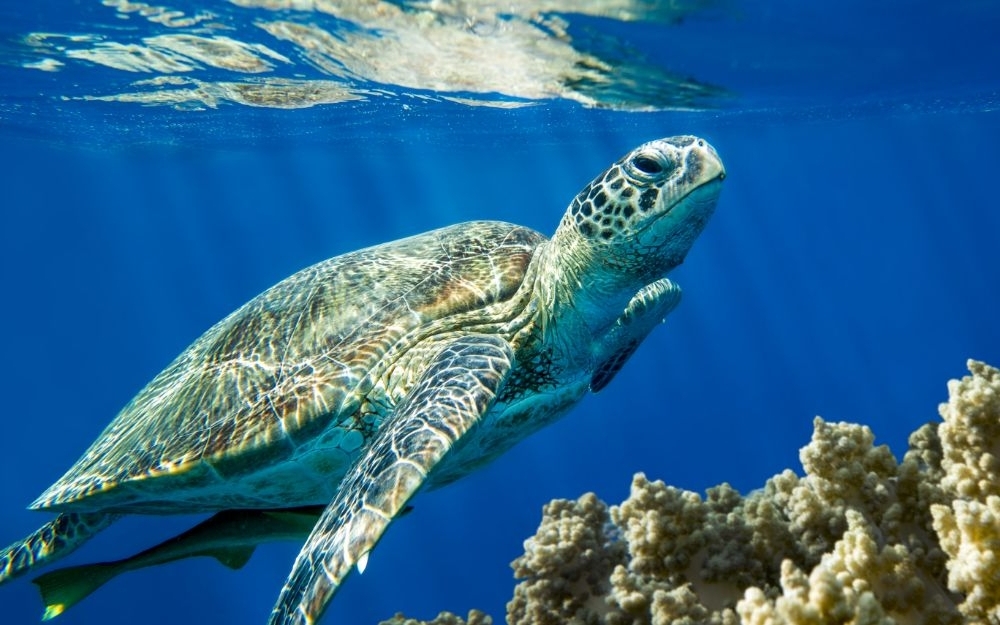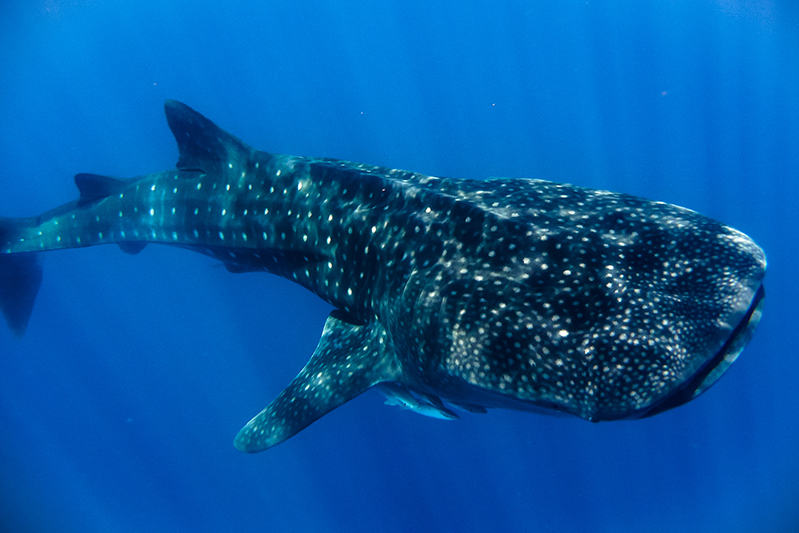Our research is focused on understanding the ecological importance of large predators, especially in the ocean, and the consequences of human-induced declines in their populations. We work to conduct research on hard-to-study marine animals, from whales and dolphins to sharks and sea turtles, in their natural habitats.
Crocodilians
Throughout history, crocodilians have been persecuted as pests and used for meat and leather. Our work is helping expand our knowledge of these large reptiles. Until recently, only three crocodilian species were recognized as indigenous to Africa, but recent evolutionary studies, including those undertaken by our Dr. Matt Shirley, revealed that Africa is home to seven unique crocodile species.
Alligator
Alligators (Alligator mississippiensis) are an abundant predator in the freshwater and estuarine habitats of the Everglades.
We've conducted research on Everglades alligators for almost a decade, focusing on the transition zones between saltwater and freshwater areas in the Shark River basin. The goal is to anticipate how these animals will respond to changes in water flow from an ongoing large-scale restoration project.
We are also conducting surveys and experiments to look at the ecosystem-level effects of alligators as ecosystem engineers, primarily in phosphorus-poor Everglades freshwater marshes.

Congo Dwarf Crocodile
Dwarf crocodiles (Osteolaemus Osborni) are a complex of 3 cryptic, diminutive crocodile species that are distributed throughout the forest ecosystems of Central and West Africa. They are different from most other crocodiles in that they are heavily terrestrial; they are one of the most important terrestrial predators in Afrotropical forests.
In many countries, dwarf crocodiles are also among the most important bushmeat sources for local communities. Dr. Shirley’s research with these species seeks to better inform our conservation efforts. We are researching dwarf crocodile phylogeography and modeling the factors underlying the species' current and future distribution. We are working to develop standardized survey and monitoring protocols so that local authorities can monitor the impact of extensive harvest. And we are researching the ecological and evolutionary implications of dwarf crocodiles living in cave ecosystems. Our work relies on conservation technologies, including environmental (e)DNA, and other tools, such as molecular markers and parasitology, to better understand the crocodiles' role in the ecosystem.

West African Slender-Snouted Crocodile
West African slender-snouted crocodiles (Mecistops Cataphractus) are restricted to West Africa, where we estimate only 500 adults may be left in the wild, making them one of the most endangered vertebrates in the world. Following from Dr. Shirley’s research revising the systematics of the genus Mecistops, his research with this species is seeking to better inform our conservation efforts. We are researching slender-snouted crocodile movement and its territorial and habitat selection ecology to better inform reintroduction efforts. We are assessing the efficacy of existing protected areas networks to protect remaining populations of this species, while also working to estimate species abundance and model the factors behind the crocodiles' current and future distribution. Our work relies on conservation technologies ranging from telemetry to environmental (e)DNA.

Sea Turtles
Centuries of exploitation have depleted sea turtle populations to a fraction of their historical numbers. Successful conservation depends on the protection of these endangered species, their habitat and predators — all of which vary greatly among coastal communities. The continued decline of sharks (sea turtles' natural predators) and human-driven habitat changes can affect turtles' behavior and habitat use.
We have been involved in sea turtle research since 1997, when initial studies began as part of the Shark Bay Ecosystem Research Project in Western Australia. Studies have since expanded to several locations, including the Caribbean Sea (French West Indies and Abaco, Bahamas), Madagascar, and globally using data collected through the Global FinPrint project. Using a combination of observational and experimental studies, we investigate the role of predation risk from large sharks in shaping sea turtle behavior; the effects of environmental factors on diving behavior, foraging ecology and individual specialization in behavior; and the role of sea turtles in seagrass and coral reef ecosystems.
Green Turtle
Green turtles (Chelonia mydas), which primarily graze on seagrass, have the potential to affect seagrass communities, so it's important to understand the effect of predators' presence on grazing behavior. Many regions are implementing protections for sea turtles and even sharks, but many marine ecosystems in these regions are strongly affected by human-generated stressors.
In 2014, our lab expanded its study of Caribbean sea turtles to the French West Indies (Guadeloupe, Martinique and St. Martin) to investigate foraging preferences for native versus invasive seagrass species and whether green turtles might facilitate or attenuate the invasion through their choice of habitats and feeding patterns. As part of the Shark Bay Ecosystem Research Project, we also study the foraging behavior and habitat use of green turtles relative to food availability and the risk of predation by tiger sharks (Galeocerdo cuvier).
Hawksbill Turtle
Hawksbill turtles (Eretmochelys imbricate) are understudied relative to other sea turtle species. Known to be predominant sponge predators, they spend their adult life foraging on coral reefs. Previous research indicates that hawksbills have the potential to play a vital role in shaping marine ecosystems, despite their small numbers; however, the effects of turtle foraging on community dynamics between prey and habitat remain largely unclear. In Nosy Be, Madagascar, our goal is to develop a better understanding of how habitat quality affects hawksbill sea turtle distributions, and what role these turtles play in coral reef ecosystems.

Loggerhead Turtle
Loggerhead turtles (Caretta caretta) can be found worldwide from tropical to temperate waters, migrating long distances for foraging and nesting purposes. As carnivores, loggerheads feed on crustaceans, mollusks, sponges, cnidarians, and bivalves. Loggerhead sea turtles are some of the largest predators of benthic invertebrates and may play an important role in structuring the composition and dynamics of benthic communities. Currently, Loggerhead populations are being studied by the Shark Bay Ecosystem Research Project through the use of satellite tags in order to obtain more information on loggerhead migrations, movements, and habitat use.

Research Locations
Sharks & Rays
Looming large in the public imagination, the elasmobranchs - sharks and rays - are not as well understood as their reputation might suggest. Data is lacking for many populations, complicating efforts to preserve them in the face of fishing pressure, habitat loss and other human impacts. The loss of sharks and rays can upset food webs and alter ecosystems.
Our team's elasmobranch research takes us literally around the world - from the Florida Coastal Everglades to Shark Bay, West Australia, and many points in between - with animal-borne and stationary cameras, satellite tags and other tools to learn more about these animals.
Juvenile Bull Sharks
Bull sharks (Carcharhinus leucas) use the bays and upstream areas of the southwest Everglades National Park Shark River basin as a nursery. These habitats support many juvenile sharks where they are an important top predator. We’ve studied juvenile coastal Everglades bull sharks for over a decade. The goal is to anticipate how they will respond to changes in water flow from an ongoing large scale restoration project that re-directs fresh water back into the Everglades. Using acoustic tracking, population size monitoring, and stable isotopes, we’re studying the movements, behavior, and trophic roles of juvenile bull sharks and how these roles may change with restoration.

Madagascar Whale Sharks
In collaboration with Mada Megafauna, the Marine Megafauna Foundation, the National Center for Oceanographic Research in Madagascar and Les Baleines Rand'eau, Dr. Jeremy Kiszka is studying the population status and residency of whale sharks (Rhincodon typus) off Nosy Be, Madagascar. Photographic identification of individuals coupled with satellite tagging will help researchers determine where these sharks are moving and whether there is a decline in sightings. The Madagascar Whale Sharks team plans to communicate these results with the local government to establish management regimes.

Whales & Dolphins
Marine mammals feed at multiple trophic levels and occur from freshwater to open-ocean ecosystems of all latitudes. Due to their abundance, large-scale movements and high metabolic rates, they have the potential to affect the structure and function of ecosystems from both top-down and bottom-up pathways.
We conduct research on dolphins in Shark Bay, Western Australia, and in the coastal Everglades. During his time with National Geographic, Dr. Heithaus helped other scientists by deploying Crittercams on humpback whales, pilot whales, false killer whales and bowhead whales. Recently, we started a study of deep-diving species in the Caribbean.
Bottlenose Dolphins
Bottlenose dolphins (Tursiops truncatus) are an abundant top predator of the coastal Everglades. We're investigating trophic interactions of dolphins and how these interactions might vary within and among habitats. To reveal the factors influencing dolphins' habitat use and foraging decisions, the team has conducted a combination of boat-based sighting, photo identification, passive acoustic monitoring using C-PODS, and biopsy sampling throughout the Shark River Estuary, Whitewater Bay, Florida Bay and coastal waters of the Gulf of Mexico.

Whales and Dolphins of Guadeloupe
In 2014, we initiated a study of sperm whales and other cetaceans offshore the west coast of Guadeloupe in the Caribbean. In collaboration with SPAW-RAC and funded by the Total Foundation (France), the team is using animal-borne video cameras developed by Exeye Ltd. as well as biopsy sampling to study the behavior of deep-diving species. From the biopsy samples, it is possible to measure contaminant loads, conduct genetic studies and analyze the chemical composition (stable isotopes) of skin and blubber. Combining this information with the behavioral data from the video cameras will help us foraging behavior and patterns and potential threats to a variety of species, especially sperm whales. Educational activities including video projects for students will also be developed.
